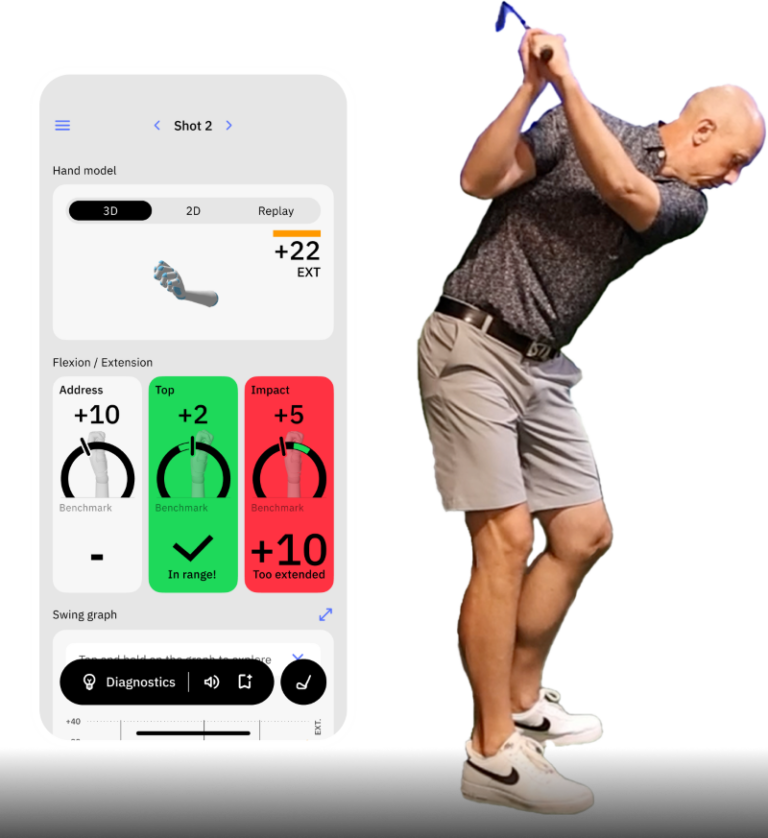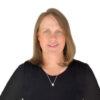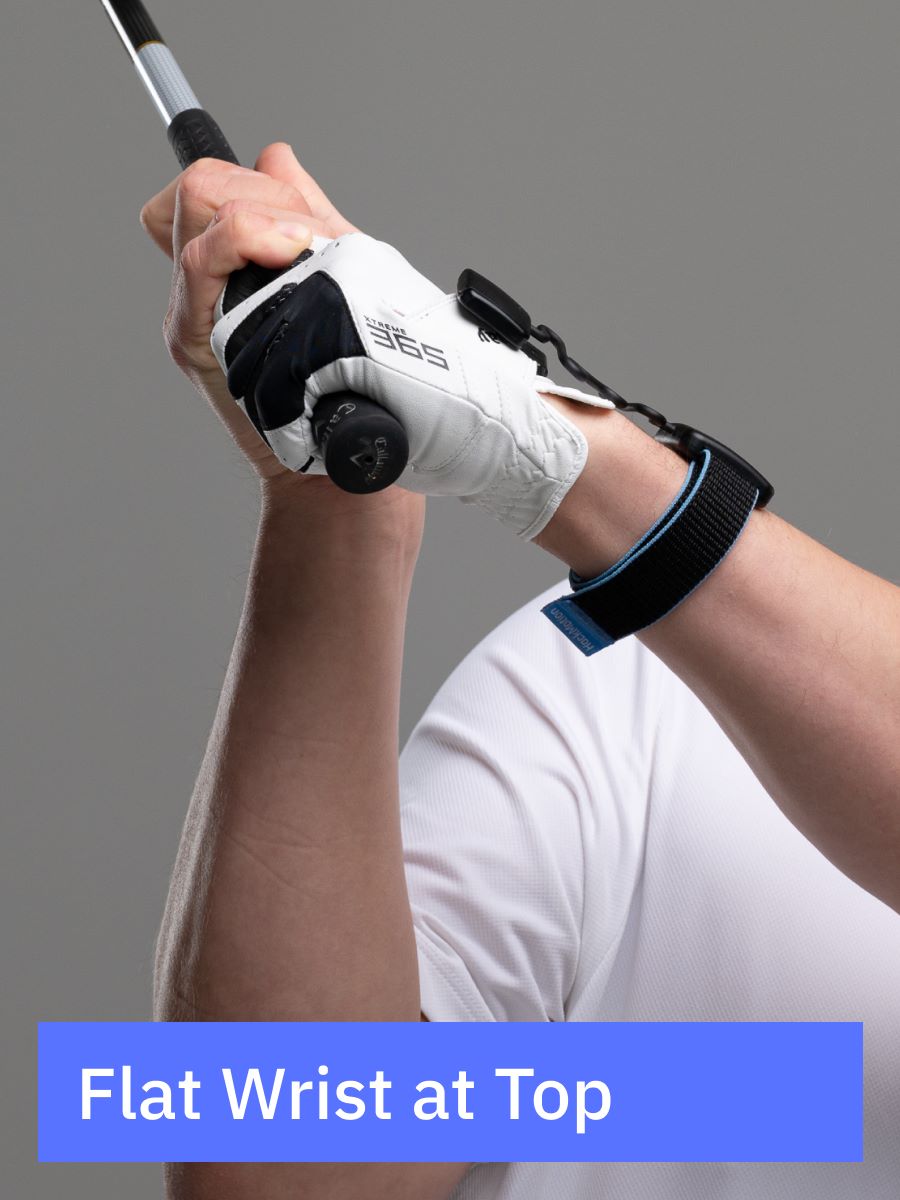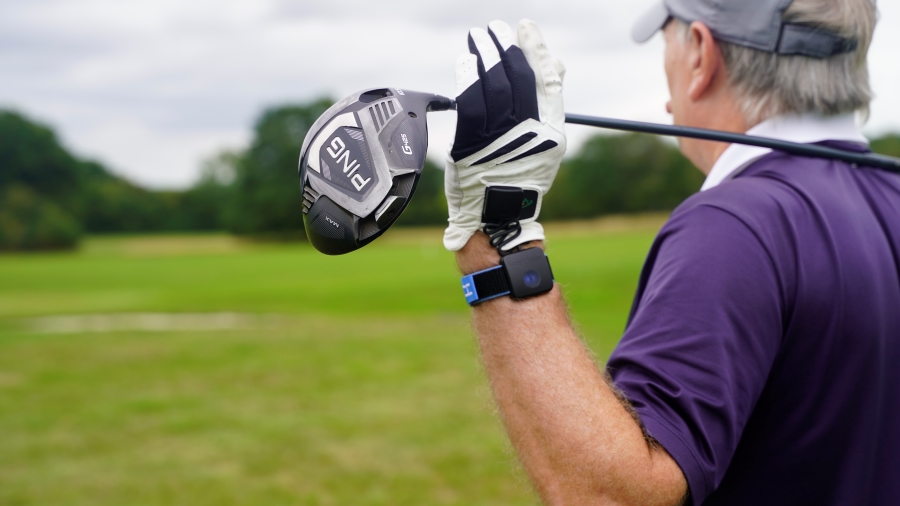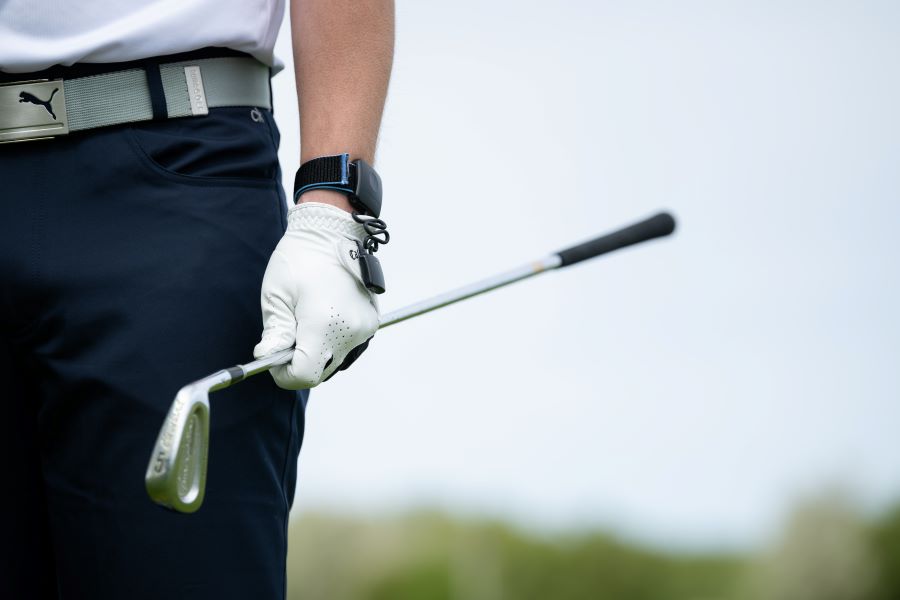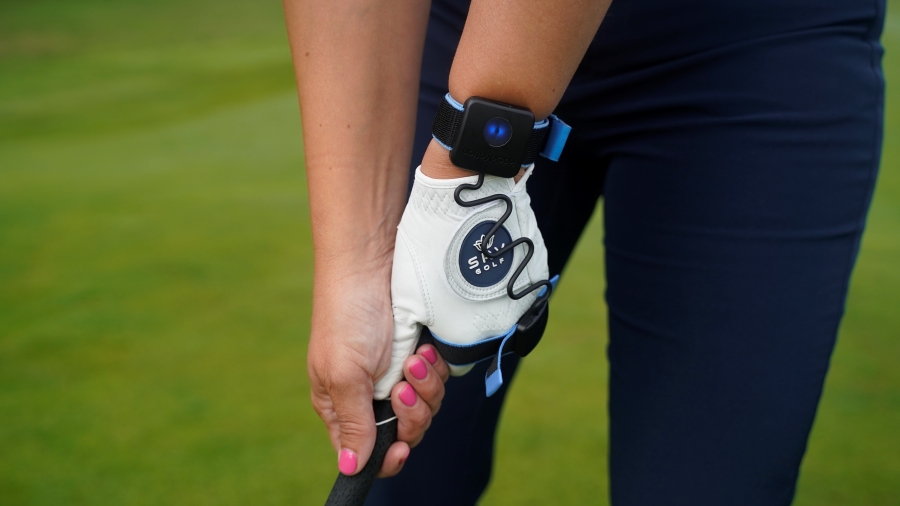How Wrist Angles Affect Spin Rates in Golf
Your wrists control the clubface angle at every stage of the swing. Get them right and you’ll flight the ball better, control spin, and hit your windows more often.
If you struggle to create or reduce spin especially around the greens, dialing in wrist action is the fastest lever to pull.
In this guide, we’ll break down how wrist angles affect spin in both the long game and the short game, then show you a few practical drills you can take straight to the range or practice green.
Key Takeaways
Here are the most important thins to know about spin rates and the wrists in golf:
- Wrist goals change by shot: low spin for distance (driver/long game), higher spin for control (short game).
- Forward shaft lean + flexed (bowed) lead wrist delofts the face = lower launch and spin.
- More lead-wrist extension and a slightly open face add loft = higher spin, useful in the short game.
- Track lead-wrist flexion/extension and release timing with HackMotion to match wrist patterns to the shot.
- Fixing face control at impact is the quickest way to change spin. (See: How to Square the Clubface and Wrist Action in the Golf Swing.)
Contents
Wrist Angles and Spin Rates in the Long Game
When hitting drivers and long irons, spin rates directly influence distance and shot shape. Too much spin and the ball balloons; too little and it knuckles or falls out of the sky.
Your wrists, especially the lead wrist, determine how much loft is delivered and how square the face is at impact.
Delofting the Club
Forward shaft lean with a flexed or bowed lead wrist reduces loft at impact. This combination creates lower launch, lower spin, and more penetrating ball flights. It’s why tour players flight their long irons so consistently.
If you’re hitting drives that spin too high and float, training this bowed-wrist position is one of the quickest fixes.
Release Point
How you time your release (the unhinging of the wrists) can either add or reduce spin. An early release usually adds loft and increases spin, while a later release keeps the handle forward longer, reducing loft and lowering spin.
If you struggle with high-spin, weak shots, chances are your release is too early. Conversely, if you can’t hold greens on long approaches, you may be releasing too late and de-lofting too much.
Face Angle
The lead wrist’s flexion and extension decide whether the clubface is open or closed.
- Flexion (bowed wrist): closes the face slightly, reduces loft and spin.
- Extension (cupped wrist): opens the face, adds loft and spin.
Learning to adjust this intentionally is the secret to dialing in your long-game spin.
Optimizing for the Long Game
If you want maximum distance, you need a flat-to-flexed lead wrist and forward shaft lean at impact. For approach shots that need to land soft, ease up on the lean and keep the lead wrist closer to flat.
Using HackMotion during practice helps you measure these exact wrist conditions and connect them to ball flight changes on the course.
Wrist Angles and Spin Rates in the Short Game
Around the greens, the spin equation flips. Instead of trying to minimize spin, you want the ability to create more spin on command for better stopping power. Wrist angles play a massive role here too.
Wrist Position at Impact
For lower, rolling chips, a flat or slightly flexed wrist at impact keeps the face stable and spin down.
For higher, spinnier shots, a neutral or slightly extended wrist at impact opens the face just enough to add loft and spin.
Angle of Attack
A steep angle of attack usually produces more spin.
A shallow angle reduces spin and makes the ball run out.
Your wrist motion, whether you add hinge or not, affects how steeply you deliver the club.
Clubface Position
Extension in the lead wrist opens the face and adds loft. This is especially important for bunker shots or when you need the ball to land softly from the rough.
Players who struggle out of the sand often fail to keep enough extension in the lead wrist.
Wrist Hinge
The amount of hinge you add determines the trajectory and spin.
- Minimal hinge = lower bump-and-run style chips.
- More hinge (radial deviation) = higher pitches and lobs with more spin.
Think of hinge as your “spin control lever.”
Optimizing for the Short Game
If you want a running shot, keep hinge to a minimum and lead-wrist angle stable. If you need a higher, softer shot, hinge the wrists earlier and allow for a little more extension.
Pairing HackMotion with wedge practice shows you exactly how much hinge and extension you’re using.
Drills to Control Spin with Wrist Angles
Here are four drills that make wrist mechanics (and spin control) more tangible. Each one ties directly into the long or short game and can be tracked using HackMotion.
Stock Pitch: Predictable Spin
A stock pitch should launch mid-height and spin enough to stop within a few feet.
Stock Pitch: Predictable Spin – Step by Step
- Set a small lead-wrist extension “green zone” in HackMotion at impact.
- Add moderate wrist hinge in the backswing while keeping the face neutral.
- Rotate through impact with no face roll; finish with the face square.
- Land the ball on a target zone (like a towel) 10–15 yards away.
Long-Game Lean & Low-Spin Check
This drill builds forward shaft lean and flattens the wrist to control long-game spin.
SLong-Game Lean & Low-Spin Check – Step by Step
- Hit waist-high punch shots with a 9-iron.
- Use HackMotion feedback to reduce lead-wrist extension at impact.
- Focus on ball-first contact for a lower, straighter flight.
- Progress to hybrids and woods while keeping the same wrist pattern.
Lob/Bunker: Extension for Height & Spin
Perfect for soft-landing lob shots and sand play.
Lob/Bunker: Extension for Height & Spin – Step by Step
- Set up slightly farther from the ball with the face slightly open.
- Add hinge while keeping the lead wrist extended.
- Brush the ground under the ball with a steeper strike.
- Maintain extension through impact so the face keeps “looking back at you.”
Low Runner: Flat Wrist, Minimal Hinge
Great for tight lies and when you want the ball to release.
Low Runner: Flat Wrist, Minimal Hinge – Step by Step
- Stand a bit closer to the ball with a more upright shaft.
- Keep the lead wrist flat and hinge to a minimum.
- Make a small pivot-driven motion back and through.
- Land the ball just on the green and let it roll out.
Final Thoughts
Wrist angles are the hidden key to spin control. Bowed and flat wrists keep spin down for distance; extended wrists and more hinge create spin for stopping power.
By practicing these motions and using HackMotion to measure them you’ll connect how your wrists move to how the ball reacts.
